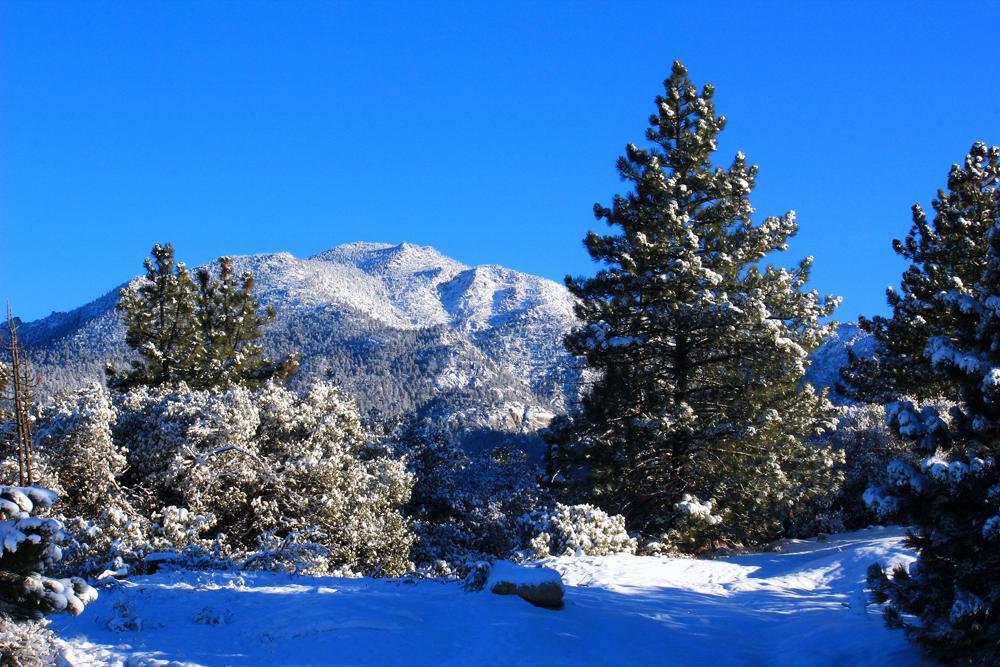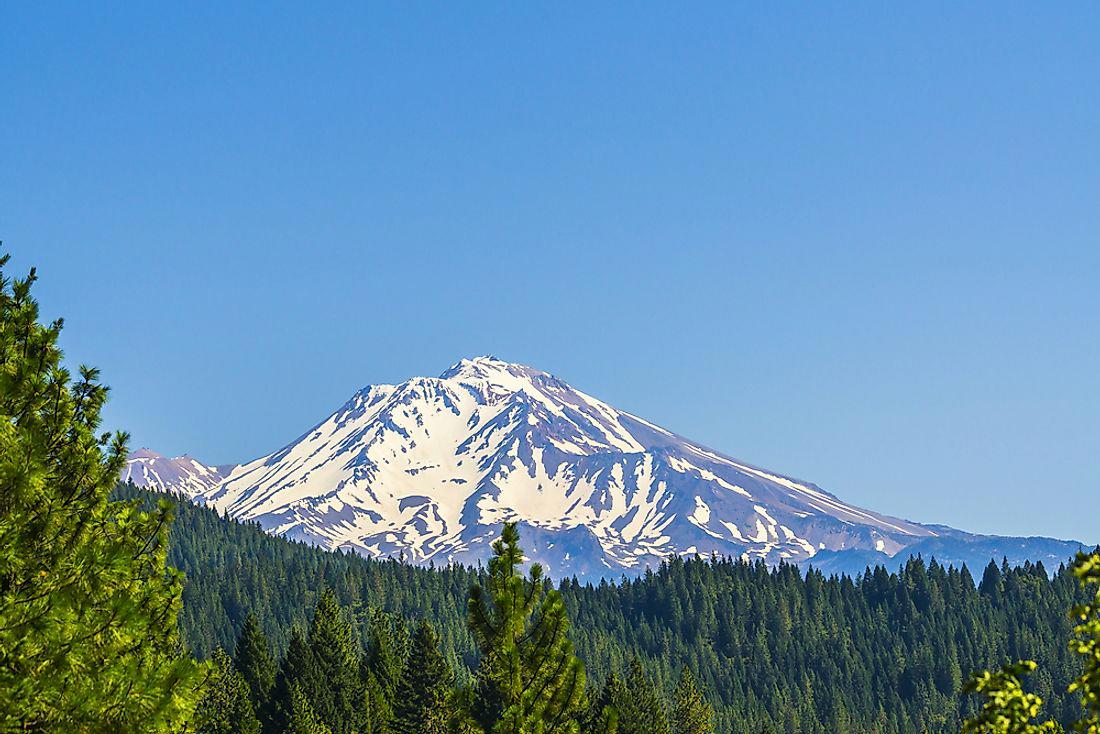California is an interesting place when it comes to weather, with a state-wide climate that varies significantly depending on where you are. While the northern parts of California typically experience colder temperatures and more precipitation than the southern regions, there are some notable differences between parts of the state. This article will explore the question of whether or not it snows in California, looking at various factors such as location, elevation, and proximity to the coast.
The short answer is yes: snow can fall in California. However, the effects on different areas are quite varied. Generally speaking, those places located at higher elevations within the mountainous regions of California tend to see more snowfall than anywhere else in the state. This includes locations like Lake Tahoe and Mammoth Mountain, both of which receive a considerable amount of snow each year.
On the other hand, areas located at lower elevations or closer to the coast often don’t see much snowfall at all. Coastal cities like Los Angeles and San Francisco rarely experience any significant snowfall – even on their highest peaks – due to their mild climates. But even so, they occasionally do get a dusting of white during particularly cold years or during heavy storms originating from colder parts of the country.
In between these two extremes lies a swath of counties that can experience anything from light flurries to major dumps of powdery flakes depending on local conditions and weather patterns. Places like Sacramento and Fresno may only experience light snowfall occasionally, while higher elevations near Bishop or Yosemite tend to get more frequent accumulations throughout winter months.
Whether or not you’ll see snow in California depends largely on where you are and what kind of weather system is currently passing through your region – but rest assured that it does indeed snow in many parts of this beautiful state!
Does It Really Snow In California?
The state of California has a varied climate, with regions that experience diferent types of weather. In general, the northern part of California experiences more precipitation and colder temperatures than the southern part. The coastal areas of California are milder, and typically don’t see snowfall except in the highest elevations.
The town of Truckee, located in the Sierra Nevada mountain range, is one of the snowiest places in California. On average, Truckee sees about 250 inches of snow each year. In fact, the town often experiences so much snow that it has to be cleared from the roads with heavy machinery.
Other parts of California that typically see significant snowfall are the Mammoth Mountain and Tahoe ski resorts. Both resorts get an average of 400 inches of snow each year.

What City In California Does It Snow?
Truckee, California is located in the Sierra Nevada mountain range and is a popular destination for skiers and snowboarders looking to enjoy some winter sports. In fact, Truckee receives about 204.3 inches of snow per year — making it the snowiest city in the United States according to Extreme Weather: A Guide and Record book by Christopher C.
Does It Snow In Los Angeles?
Los Angeles, California does not typically experience snowfall. The average yearly precipitation in Los Angeles is 16 inches, most of which falls as rain. Although it is possible for snow to fall in Los Angeles, it is rare. When snow does occur in the city, it usually melts shortly after hitting the ground.
Why Does It Not Snow In California?
There are a number of reasons why it does not snow in California. The main reason is that the state is located in a subtropical region, which means the climate is warmer than other parts of the country. The average temperature in California is around 60 degrees Fahrenheit, while the average temperature in Minnesota, which typically experiences heavy snowfall, is around 20 degrees Fahrenheit.
Another reason why it does not snow in California is because the state has a low humidity level. When the air is dry, it is less likely to produce precipitation in the form of snow. Additionally, California’s mountains are not as high as mountains in other states, and this prevents cold air from reaching the state’s interior.

Does It Snow Las Vegas?
Snow in Las Vegas is a rare event. The last time the valley received any measurable snow was on December 17, 2008 when 3.6 inches of snow was reported at the Henderson Executive Airport.
The average yearly snowfall for Las Vegas is 0.4 inches, with most of that falling dring the month of December.
While it does snow in Las Vegas from time to time, it is not something that people living here have to worry about on a regular basis.
Does Hollywood Have Snow?
Hollywood does not have snow. The average yearly precipitation is 9.77 inches, of whih 0 inches is snow.
Does Hawaii Get Snow?
Hawaii does not get a lot of snow, but it does snow on the higher mountains in the state. The snow typically falls on the volcanoes Mauna Loa, Mauna Kea, and Haleakala, wich are all over 10,000 feet high. The snow is rare and does not last long, but it can make for a beautiful sight when it happens.
Does New York Have Snow?
The climate of New York is marked by relatively abundant snow. The average snowfall in much of the state is greater than 70 inches. In upstate New York, over 60 percent of the area experiences an annual average snowfall of more than 100 inches. Much of the winter precipitation in upstate New York falls as snow.
Does It Snow In Miami?
Yes, it has been known to snow in Miami, although it is not a common occurrence. The last time Miami officially recorded any accumulating snowfall was in 1977, although there were non-accumulating snow flurries in parts of the city on January 19, 1977 during the cold wave of January 1977.
Does It Snow In Florida?
The chances of snowfall in Florida are rare, but not impossible. The state’s northernmost areas have recorded measurable snowfall a few times each century, but the major cities in Florida have nevr seen snow. This is because Florida is located in a subtropical climate zone, which means the temperatures are usually too warm for snow to form. However, on rare occasions when the temperature dips low enough, flakes can form in the air and be observed briefly.
Does Texas Have Snow?
While Texas doesn’t see snow on a regular basis, it’s not unheard of. Areas in the Panhandle and West Texas are more lkely to see snow, but it can also occur in central Texas and even as far south as Corpus Christi. Snow flurries and ice are rare, but they do happen from time to time.
So, why does Texas see so little snow? The main reason is because of its location. Texas is located in the southern United States, and as a result, it doesn’t experience the cold temperatures that are ncessary for snowfall. Additionally, the state has a high elevation threshold, meaning that not many places in Texas are high enough to support snowfall.
Does It Snow In Chicago?
The city of Chicago experiences a variety of weather conditions, including snowfall durng the winter season. In an average year, the city sees around 36 inches (91 cm) of snowfall. However, there is significant variation in this amount, with snowfall ranging from 9.8 inches (24.9 cm) in 1920–21 to 89.7 in (228 cm) in 1978–79.

Chicago typically sees several smaller snowfalls during the winter season, with light accumulations of around 2 inches (5.1 cm). However, occasionally the city experiences a large snowstorm which can result in significant accumulations. For example, on January 26-27, 2011, Chicago saw over 20 inches (51 cm) of snowfall as a result of a major winter storm.
What Is The Coldest City In California?
The coldest city in California is Bodie State Park. It is located in Mono County and has an average annual temperature of 36.8 degrees Fahrenheit. The coldest month is January, when the average temperature is 26.3 degrees Fahrenheit.
Does Mexico Have Snow?
Mexico has snow! In fact, twelve out of the thirty-two states of Mexico experience snowfall. Some mountain peaks and volcanoes can also get up to 10 inches of snow in the winter months.
Does London Have Snow?
London does have snow, but it usually snows on fewer than 10 days during a typical winter. The snow can be accompanied by blizzards, which can cause significant disruption to the city. In January 2010, for example, London was hit by a severe snowstorm that caused travel chaos and closed schools and businesses.
